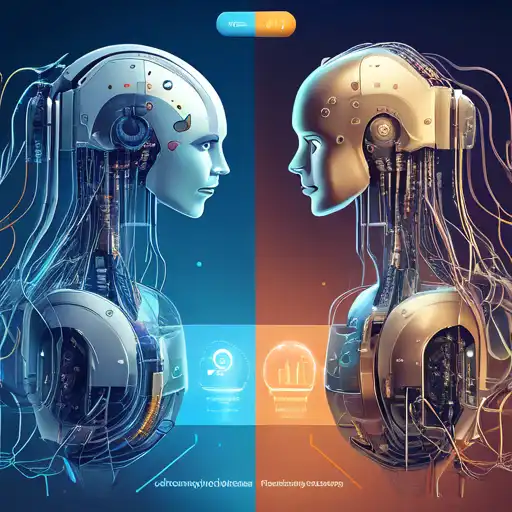Introduction to Machine Learning and Deep Learning
In the realm of artificial intelligence (AI), Machine Learning (ML) and Deep Learning (DL) are two pivotal technologies that have transformed how machines interpret data. While they share common ground, their approaches and applications differ significantly. This article delves into the key differences between ML and DL, providing insights into their unique characteristics and uses.
What is Machine Learning?
Machine Learning is a subset of AI that enables systems to learn from data, identify patterns, and make decisions with minimal human intervention. ML algorithms are trained using structured data and can improve their accuracy over time. Common applications include spam detection, recommendation systems, and fraud detection.
What is Deep Learning?
Deep Learning, a more advanced subset of ML, utilizes neural networks with many layers (hence 'deep') to analyze various factors of data. DL excels in processing unstructured data like images and speech. It's behind innovations such as facial recognition, autonomous vehicles, and voice-activated assistants.
Key Differences Between Machine Learning and Deep Learning
Data Dependency
ML algorithms perform well with smaller datasets, whereas DL requires large amounts of data to achieve high accuracy. This makes DL more data-hungry but capable of handling more complex tasks.
Feature Engineering
In ML, feature extraction is manual and requires domain expertise. DL automates this process, reducing the need for human intervention and allowing the system to learn features directly from the data.
Computational Power
DL models demand significant computational resources due to their complexity and the volume of data they process. ML models, being simpler, require less computational power.
Interpretability
ML models are generally easier to interpret and explain, making them preferable in industries where transparency is crucial. DL models, with their intricate layers, are often seen as 'black boxes.'
Choosing Between Machine Learning and Deep Learning
The choice between ML and DL depends on the specific requirements of the project, including the nature of the data, the desired accuracy, and available resources. For tasks involving structured data and where interpretability is key, ML is often the better choice. DL shines in handling unstructured data and achieving state-of-the-art performance in complex tasks.
Conclusion
Understanding the differences between Machine Learning and Deep Learning is essential for leveraging the right technology for your AI projects. While ML offers simplicity and efficiency for straightforward tasks, DL provides the power and flexibility needed for more complex challenges. As AI continues to evolve, the boundaries between these technologies may blur, but their core differences will remain relevant.
For more insights into AI technologies, explore our articles on Artificial Intelligence and Data Science.
